
 |
||||||||||||
|
Mt. Rogers High Country Horse Trail Management:
Backcountry Blight or Reduced Impact Strategy?? |
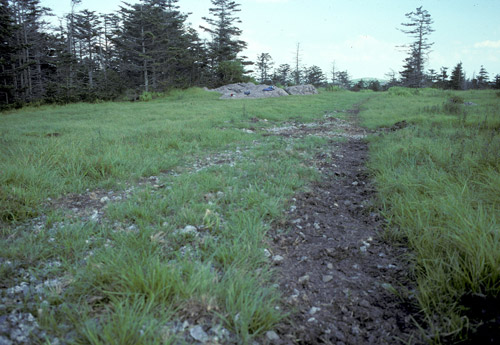
|
|
June 2000: The Forest Service relocates the Virginia Highlands Trail right through one of the finest backcountry campsites on Cabin Ridge.
|
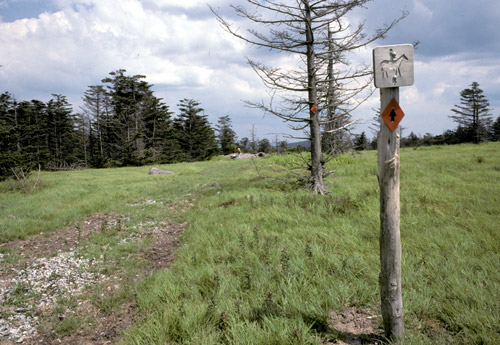
|
|
June 2000: Another view of campsite desecration. Why did they not move the trail 50 meters to the south??
|
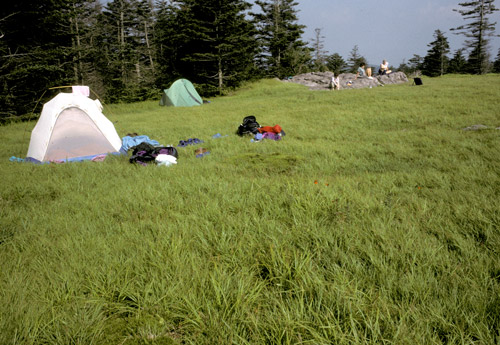
|
|
June 1998: What it looked like before a horse trail was plowed through the campsite.
A few days after this web page was posted, the Forest Service's Tim Eling responded to an email.
I also want to point out that the bottom 2 pictures you displayed that are
titled June 2000 are shots of sections of the Virginia Highlands Horse
Trail that have not been repaired yet. We will get to the very bad section
of this trail that stretches from Cabin Ridge to Brier Ridge soon. This
section is one of the worst sections in the high country and must be dealt
with soon. After repairing, we will apply crushed stone in order to
"harden" the trail.
I hope that you can still find areas to camp on Cabin Ridge. I agree that
it is one of the beautiful spots in the high country. I myself have camped
out there & climbed on the big rock in the woods to the south. I
appreciate your comments. Feedback from trail users is a critical way we
get information on our management actions. If you have any further
comments or questions, please do not hesitate to e-mail, write, or call me. Sincerely, Tim Eling |
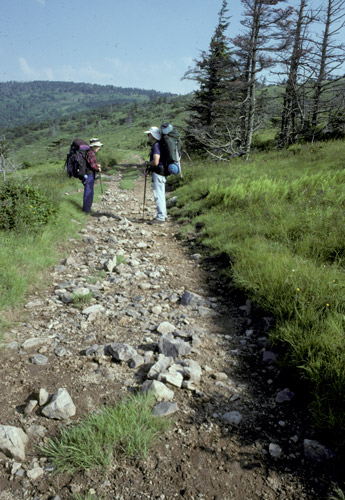
|
|
June 2000: Recipe for erosion. Without a hard gravel surface, what will this horse trail look like in five years?
|
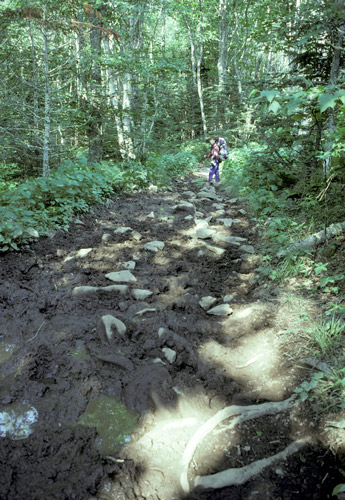
|
|
June 2000: The Virginia Highlands Horse trail along the south flank of Mt. Rogers. If you build a trail through a creekbed without proper drainage, this is what you get.
|